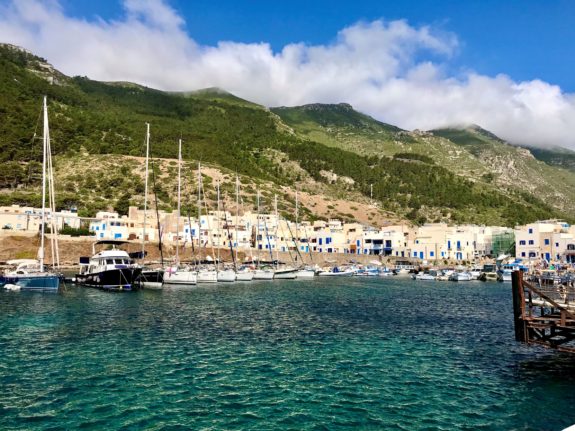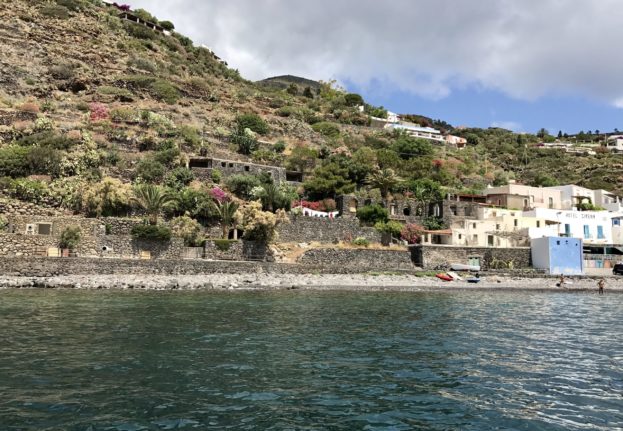Surrounded by seas, Italy is popular for its many stunning beaches and pristine islands with clear turquoise waters. And it may be difficult to choose which of them to visit.
But if I had to choose between Tuscany’s archipelago, the Pontine islands off the coast of Lazio, the Tremiti islands in Puglia, and Sicily’s many sets of ‘satellite’ isles, the latter get my vote every time.
The Sicilian islands are well connected to the mainland and there are multiple daily ferry boats within each archipelago allowing you to discover several diverse islands in a weekend. Above all, they’re near each other, so you could explore a big chunk of southern Italy in one single vacation.
As opposed to Sardinia, Sicily still boasts an untouched beauty which has survived the contamination of mass tourism.
There are three archipelagos: the seven UNESCO-listed mythological Aeolian islands, the three Egadi islands, and the two Pelagie islands which are those closest to Tunisian shores. Plus, there are the solitary big islands of Ustica north of Palermo and Pantelleria south of Agrigento.
You have a wide choice of shores, ranging from pebble beaches to jet black volcanic sand and soft white dunes.
Island villagers, eager to meet outsiders and break the winter boredom, make you feel part of a big family; they’re likely to invite you to dinner and show the best of Sicilian hospitality.
READ ALSO:
- Is Italy’s west or east coast the best place for a holiday?
- MAP: Which regions of Italy have the most Blue Flag beaches?
- Dining outdoors and hiking: How visitors plan to travel in Italy this summer
Having visited all Sicilian islands several times, staying for long periods, in my view the most genuine, quiet, and well-preserved of them all are Filicudi, Marettimo and Linosa. Here, old fishing community lifestyles and traditions survive, and they’re ideal for a detox break.
Linosa, dubbed the black jewel of the Pelagie archipelago, is the most distant of the Sicilian islands and to get there you need to embark on a long trip. The first time I visited it took me 10 hours: first the plane to Palermo from Rome, then the bus to Agrigento, and finally a night-long ferry boat ride.
When I landed at dawn I was fascinated by the jet black rocky shores of this tiny volcanic isle, which is the polar opposite of its touristy sister isle Lampedusa.
The black pebble beaches have the appearance of a Martian landscape, with the dark cliffs streaked with sulphuric yellowish and red layers. Prickly pears and capers grow along the drystone walls that line the streets. It’s a snorkeling heaven: when you dip your mask into the water it’s like swimming in a translucent black aquarium.
Linosa is so pristine that it is also one of the few remaining spots in Italy where endangered Caretta loggerhead turtles lay their eggs at night.
Forget social buzz: there’s just one tiny harbour and fishing village, a cluster of bright yellow, purple and pink dwellings covered in bright bougainvillaeas. There are no hotels, just a few apartments and cottages rented out to tourists by villagers.

You’ll find silence and solitary inlets with emerald green waters in Filicudi, the wildest and most stunning of the Aeolian islands where uncontaminated nature rules.
Here, trekking routes unwind across meadows and up to the extinct craters now covered in bright flowers.
The best way to explore it is by fishing boat, zig-zagging between its funny-shaped sea stacks and green, red and golden coral-covered cliffs scorched by lava flows from past volcanic eruptions. Ruins of a prehistoric hamlet and crumbling farmers’ huts dot the shore.
Stone steps and old donkey trails connect the harbour to whitewashed houses with typical Aeolian panoramic terraces where locals dine year-round thanks to the warm temperatures.
I was fascinated by the fishing village of Pecorini a Mare; a cluster of pastel colored seafront dwellings where there is just one tavern serving delicious seafood, and one hotel.
The best accommodation however is found in the cottages for rent and B&Bs up on the hills, with great views of the entire Aeolian archipelago, where hosts welcome guests with a refreshing glass of white wine.

If you’re looking however for a totally unplugged stay, complete with poor mobile connection, the secluded island of Marettimo off Trapani’s coast is the right spot.
Sleepy and with a primitive-mystical vibe, it’s the farthest island of the Egadi archipelago. Silence rules. Three fourths of the island is uninhabited and features tall cliffs dotted with Byzantine chapels, secret pebble-stone inlets and caves where sea monks hide. One grotto has paintings made by early humans.
The white and blue village has a few pastry shops and seafood tavernas, while early in the morning fishermen sell their daily catch at the harbor.
OPINION: Italy must update its image if it wants a new kind of tourism
There’s just one seaside resort with a bunch of houses rented out by locals. Sunset dinners here are served in front of a spooky, crumbling overhanging pirate fortress.
Whether you’re a sunseeker, an open-water swimmer, or a newcomer to such authentic island lifestyles, the islands of Filicudi, Linosa and Marettimo offer slow-pace sea holidays far from the madding crowd.



 Please whitelist us to continue reading.
Please whitelist us to continue reading.
Member comments